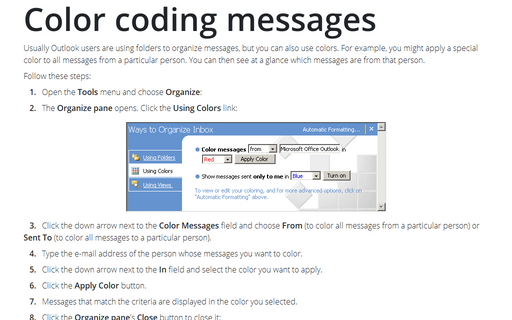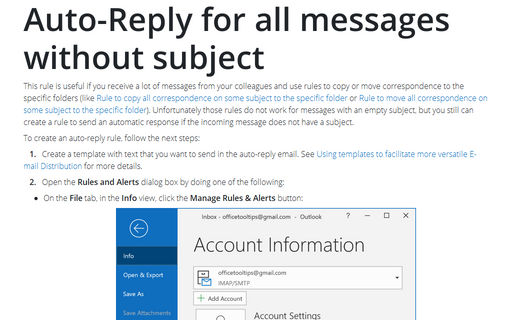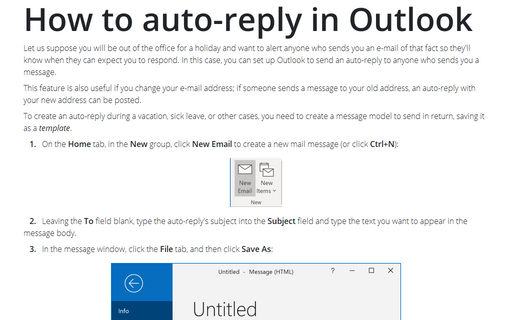Conditional formatting in Outlook
Outlook
2003
Usually Outlook users are using folders to organize messages, but you can also use colors. For example, you
might apply a special color to all messages from a particular person. You can then see at a glance which
messages are from that person.
Outlook has five predefined formatting rules, and you can create additional rules if you want to set up an additional conditional formatting. To create conditional formatting rules, do the following:
1. Select View -> Arrange By -> Current View -> Customize Current View... to open the Customize View dialog box:

2. In the Customize View dialog box, click Automatic Formatting... to open the Automatic Formatting dialog box with a set of default rules:

3. Do one of the following:
- To temporarily turn off a rule, clear the check box for that rule
- To change the text formatting that is applied to a rule, click the rule, and then click the
Font... button to open the Font dialog box:

- To add a new conditional formatting rule, click Add to create a new rule named
Untitled and then:
- In the Name box, type a name of the new rule
- Click Font... to specify the font characteristics that you want Outlook 2010 to use for tasks that meet the rule's conditions
- Click Condition... to specify the criteria for this rule:

- To change the criteria for a rule, select the rule, and then click Condition... (this button is enabled only for user's rules, not for five predefined conditional formatting rules)
- To delete a rule, click the rule, and then click Delete (this button is enabled only for user's rules, not for five predefined conditional formatting rules).


